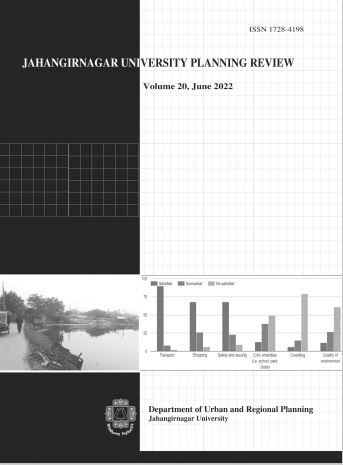Planning Stakeholders’ Perception of the Implementation of Urban Conservation Areas of Dhaka Metropolitan Development Plan
Main Article Content
Abstract
Preserving conservation areas is one of the major challenges for urban planning
policymakers around the globe. The study was conducted to undertake the perception of
the planning stakeholders regarding the conservation areas and their suggestions on how
to implement them. The Dhaka Metropolitan Development Plan (DMDP) is the prevailing
master plan comprising of Dhaka Structure Plan, Urban Area Plan, and Detailed Area
Plan. The term conservation area was not directly identified as a land use category but it
was identified as the restricted areas such as open space, flood flow zone, urban
agriculture zone, water body and retention areas, overlay zones, and non-confirming
zones which were regarded mostly for conservation purpose. In a densely populated city
with higher land scarcity, it is hard to impose restricted land as a land use category where
land tenure is in the private sector. Dhaka is a fast growing city with marginal green
spaces, protected areas, and major lands owned as small pieces of private land by lowincome people with acute housing shortages. As a result, those areas are grasped for
building construction illegally. Conservation areas can be implemented by compulsory
land acquisition which has been mentioned by 22.18% of respondents. About 19.04% of
the respondents recommended buying land at the market price by the government for this
purpose. Another effective way is policy facilitation keeping the land in the private sector
which was mentioned by 23.43% of respondents. This study reveals the perceptions of
urban planning stakeholders in implementing Urban Conservation Areas in the Megacity
Dhaka.

